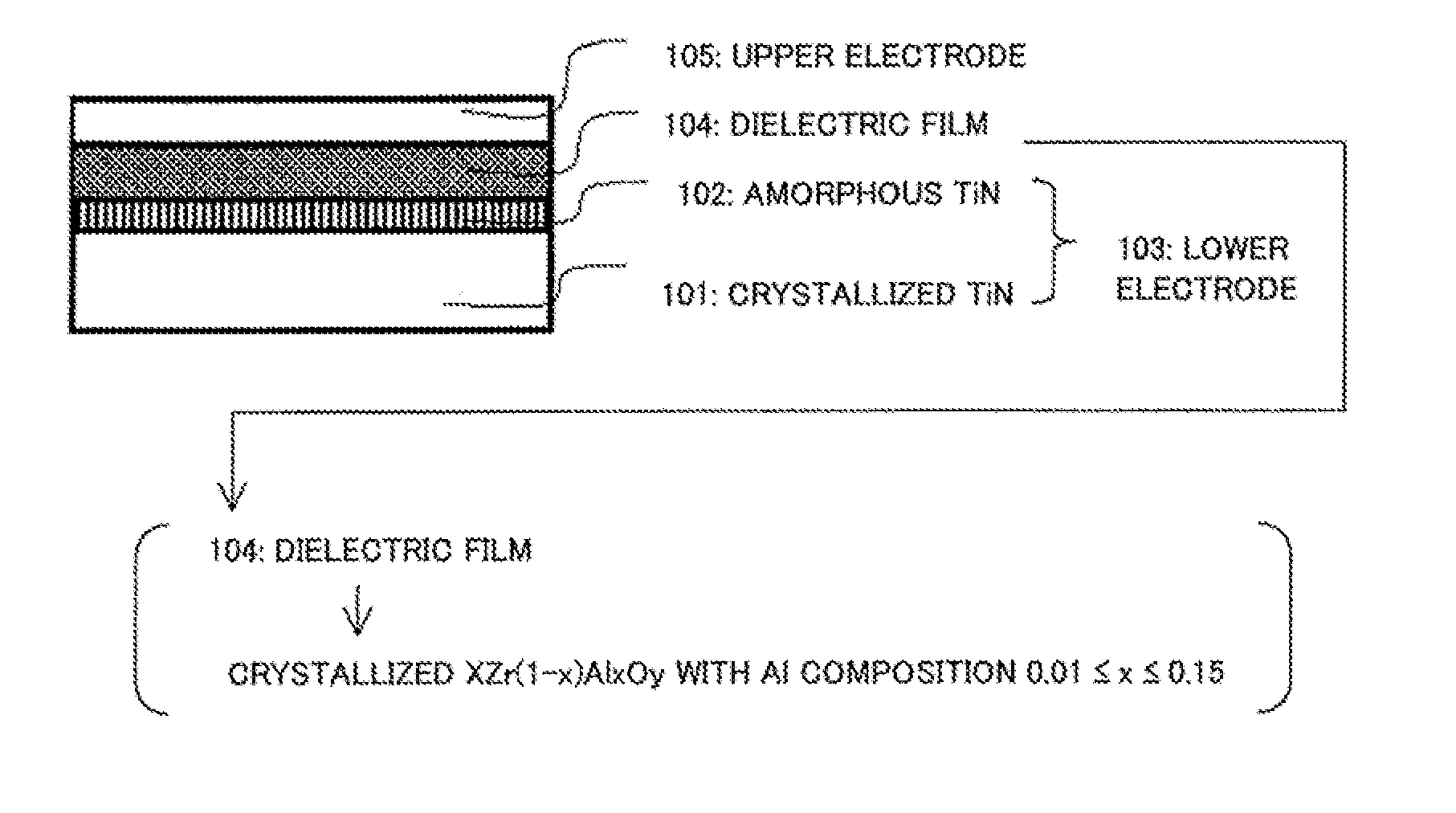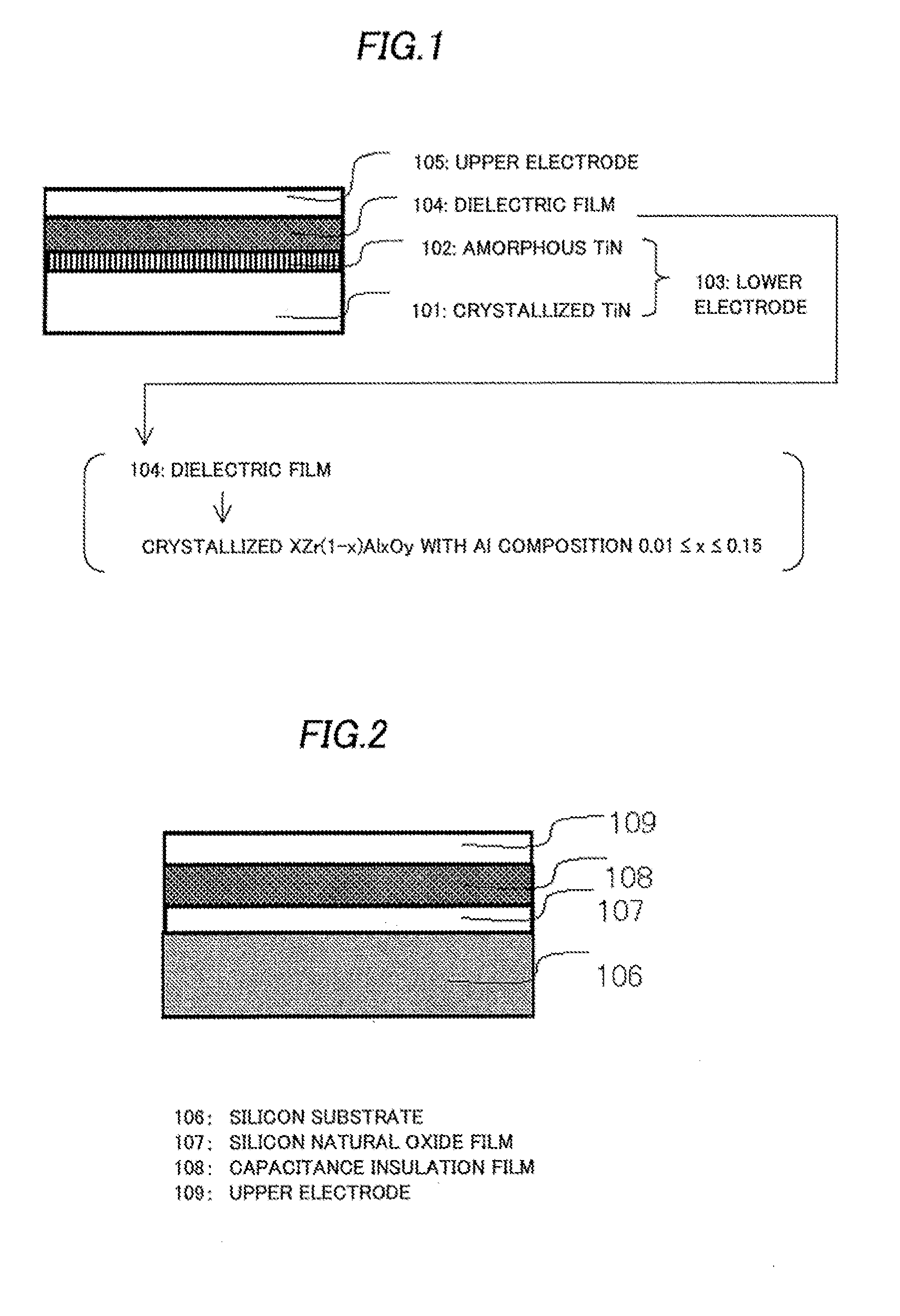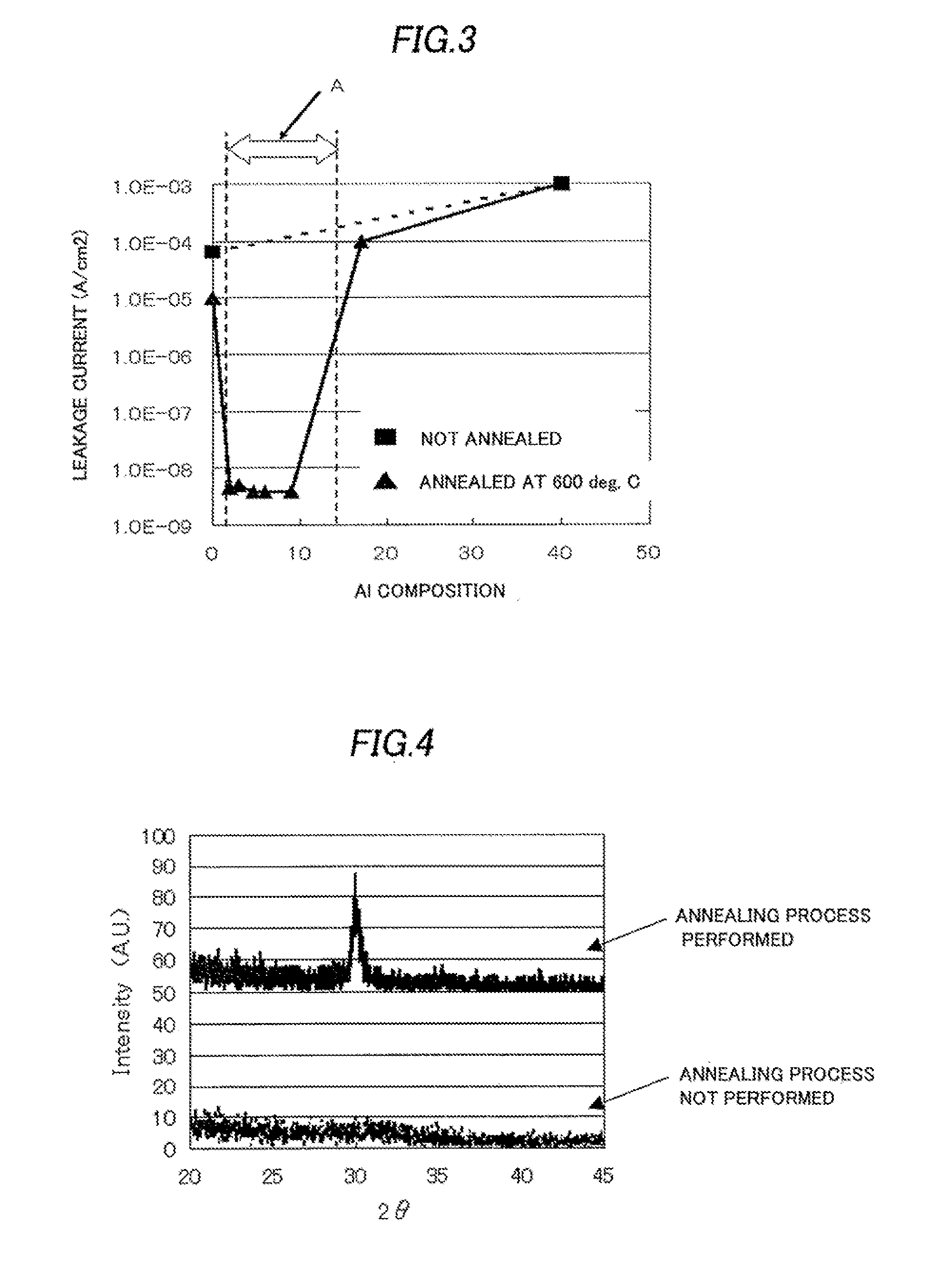Capacitor, semiconductor device comprising the same, method for manufacturing the capacitor, and method for manufacturing the semiconductor device
- Summary
- Abstract
- Description
- Claims
- Application Information
AI Technical Summary
Benefits of technology
Problems solved by technology
Method used
Image
Examples
example 1
[0135]Example 1 of the present invention will be described.
[0136]FIG. 10 is a diagram illustrating the cross-sectional structure of a capacitor, which is a semiconductor element, according to the present example. As shown in FIG. 10, on a silicon substrate 303 of the capacitor of the present example, a lower electrode 304, a metal-oxide-layer dielectric film 304 that makes up a capacitance insulation film, and an upper electrode 306 are formed. The lower electrode 304 is a laminated film made up of a lower-layer crystallized TiN 302 and an upper-layer amorphous TiN 303.
[0137]The following describes a method of producing the capacitor of the present example.
[0138]After the crystallized TiN 302 is deposited on the silicon substrate 301 with a thickness of 20 nm as part of the laminated structure of the lower electrode 304, the amorphous TiN 303 is formed with a thickness of 5 nm. The crystallized TiN film 302 can be made by a sputtering, chemical vapor deposition or ALD (Atomic Layer ...
example 2
[0151]Example 2 of the present invention will be described.
[0152]As for a method of producing a capacitor, which is a semiconductor element of the present example, in similar processes to those of Example 1, the Zr(1-x)AlxOy film is formed on an electrode with the Al composition x=0.045 and a thickness of 2 nm to 20 nm; an annealing process is performed for 10 minutes at 400 and 600 degrees Celsius under a nitrogen atmosphere. Then, Au is deposited on the Zr(1-x)AlxOy film by a vacuum deposition method with a film thickness of 100 nm to form a capacitor. The laminated electrode of the crystallized or amorphous TiN and the crystallized TiN serves as a first electrode, and the Au as a second electrode.
[0153]A voltage is applied to the first electrode of the formed capacitor; the EOT of the element is evaluated by CV measurements, and the leakage current by IV measurements. The results are that EOT=0.7 nm for the Zr(1-x)AlxOy film on the crystallized TiN and the leakage current is 1.5×...
example 3
[0156]Example 3 of the present invention will be described.
[0157]FIGS. 13 to 18 are cross-sectional diagrams showing the process sequence of a method of producing a semiconductor device having a capacitor, which is a semiconductor device of the present example.
[0158]First, as shown in FIG. 13A, an element isolation region 2 is formed by a LOCOS (Local Oxidation of Silicon) method or STI (Shallow Trench Isolation) method on the surface region of a p-type silicon substrate 1.
[0159]In an active region encircled by the element isolation region 2, a silicon oxide film and a polycrystalline silicon film are sequentially formed; with the use of a lithographic technique and RIE (Reactive Ion Etching) technique, the laminated film is processed into a desired shape to form a gate oxide film 3 and a gate electrode 4.
[0160]Then, ion implantation is conducted using the gate oxide film 3 and the gate electrode 4 as masks to introduce n-type impurities into the silicon substrate 1. A plurality of ...
PUM
 Login to View More
Login to View More Abstract
Description
Claims
Application Information
 Login to View More
Login to View More - R&D
- Intellectual Property
- Life Sciences
- Materials
- Tech Scout
- Unparalleled Data Quality
- Higher Quality Content
- 60% Fewer Hallucinations
Browse by: Latest US Patents, China's latest patents, Technical Efficacy Thesaurus, Application Domain, Technology Topic, Popular Technical Reports.
© 2025 PatSnap. All rights reserved.Legal|Privacy policy|Modern Slavery Act Transparency Statement|Sitemap|About US| Contact US: help@patsnap.com



